|
The Deltoid is a triangle-shaped muscle located on the cap of the shoulder. Experiencing pain when the arm is lifted and held out in front of the body or to the side in response to resistance could indicate deltoid strain. In more severe cases, inflammation and swelling might be present in the area where the deltoid has torn. Pressing on the deltoid will also produce pain, especially if it is swollen, as this suggests something more has occurred than just a simple muscle strain. *For an accurate diagnosis, see a physician for a complete examination. Actions: When do you use your Deltoid? 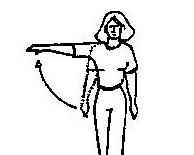 1. All the fibers of the Deltoid muscle abduct the shoulder at the glenohumeral joint. Arm abduction occurs when the arms are held at the sides, parallel to the length of the torso, and then raised in the plane of the torso. All muscles used: Deltoid (all fibers), Suprapinatus 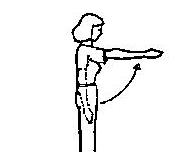 2. Anterior (closer to the front of the body) fibers of the Deltoid muscle flex the shoulder at the glenohumeral joint. The humerus is rotated out of the plane of the torso so that it points forward (anteriorly). All muscles used: Deltoid (anterior fibers), Pectoralis major (upper fibers), Biceps brachii, Coracobrachialis.  3. Anterior fibers of the Deltoid muscle medially rotate the shoulder at the glenohumeral joint. (Also called internal rotation) Medial rotation of the arm is most easily observed when the elbow is held at a 90-degree angle and the fingers are extended so they are parallel to the ground. Medial rotation occurs when the arm is rotated at the shoulder so that the fingers change from pointing straight forward to pointing across the body. All muscles used: Deltoid (anterior fibers), Latissimus dorsi, Teres major, Subscapularis, Pectoralis major (all fibers). 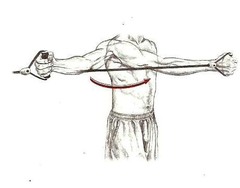 4. Anterior fibers of the Deltoid muscle horizontally adducts the shoulder at the glenohumeral joint. The motion of bringing the arm across the chest is called shoulder or glenohumeral horizontal adduction. Glenohumeral horizontal adduction is demonstrated starting from 90ᵒ of shoulder flexion with the arm slightly away from midline in abduction as seen from a front or anterior view. All muscles used: Deltoid (anterior fibers), Pectoralis major (upper fibers). 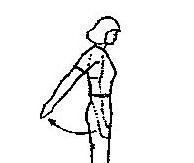 5. Posterior (closer to the back of the body) fibers of the Deltoid muscle extend the shoulder at the glenohumeral joint. The humerus is rotated out of the plane of the torso so that it points backwards (posteriorly) All muscles used: Deltoid (posterior fibers), Latissimus dorsi, Teres major, Pectoralis major (lower fibers), Triceps brachii (long head). 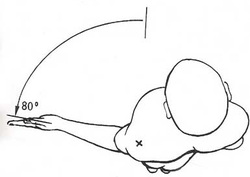 6. Posterior fibers of the Deltoid muscle laterally rotate the shoulder at the glenohumeral joint. (Also called external rotation) The opposite of medial rotation of the arm (#3 above) All muscles used: Deltoid (posterior fibers), Infraspinatus, Teres minor. 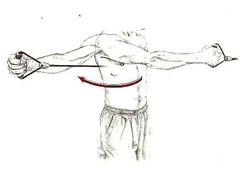 7. Posterior fibers of the Deltoid muscle horizontally abduct the shoulder at the glenohumeral joint. The opposite of horizontal adduction of the shoulder (#4 above) All muscles used: Deltoid (posterior fibers) 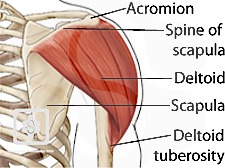 Origin (where the muscle starts - typically stationary): Lateral one-third of clavicle, acromion and spine of the scapula Insertion (where the muscle ends and where the movement typically occurs): Deltoid tuberosity Nerves: Axillary C5, 6
49 Comments
|
AuthorCrystal Devine Whitaker Archives
January 2019
Categories |
Web Hosting by IPOWER

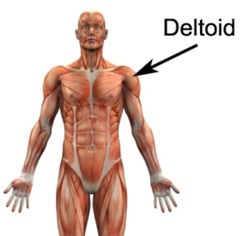
 RSS Feed
RSS Feed